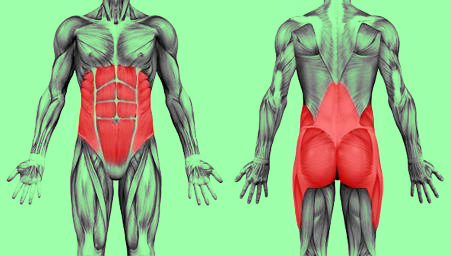
Often the use of techniques of functional training is confused with exercises that stimulate the abdominal region and named “core exercises”.
Routinely, the professionals do not bother to explain what the core, its function and which exercises the train specifically to later through education and that the information, apply the specific exercises for the region (SARGENTIM, 2013).
The core composition is formed by the trunk muscles and can be sorted by Neumann (2002) as:
Muscles of the back of the torso portion (lower back);
Muscles of the anterolateral portion of the trunk (abdominal);
Additional muscles (iliopsoas and lumbar square).
The Core region has key role in the practitioner’s body balance during implementation of the proposed movements and this region is responsible for the beginning of every exercise, allowing initial stabilization.
The core training is the result of a motor control involving the muscular capacity of the relationship between hip-lumbar-pelvic (VERSTEGEN, 2004). No training this region, members used in the exercises will unduly burdensome and thus can increase muscle fatigue and / or risk of injury.
For execution of the movement there is a joint action between the lower and upper limbs and the trunk area. Coordinated action is essential and the connection between the upper and lower limbs is made by core region (VERSTEGEN, 2004).
The core training, despite being fundamental for sports to allow safer movement for athletes, it is important for all people therefore is essential even for everyday activities. The application of core training is the basis for the training of all physical abilities in high performance sport (Wilson, 2006). Another function of this region is to strengthen the motor action, giving easier movement will run.
We must remember that the application of the core area of training must be variable according to the sport and can not be generalized forgetting specificity.